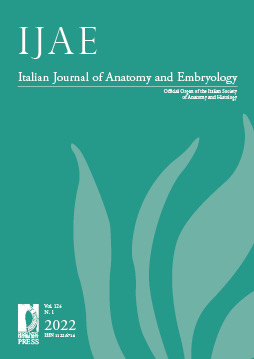From morphological basic research to proposals for regenerative medicine through a translational perspective
Published 2022-09-21
Keywords
- Scleral Ossicles (SO),
- Pal-OS®,
- chorioallantoic membrane (CAM) model,
- angiogenesis,
- osteogenesis
- critical-sized bone lesion recovery ...More
How to Cite
Abstract
Basic research, especially morphological research, often fails to get off the ground due to scarcity of opportunities and funding. There is a need to exploit ideas, while starting from a morphological basis, to channel them into pathways with translational value: patents, trademarks, alternative experimental models, etc., aimed at formulating new proposals for applied research.
Among the many sprouts emerging in laboratories where basic research is carried out throughout the country, one reality from Emilia Romagna region is represented by some insights from human anatomy teachers and researchers at the University of Modena and Reggio Emilia. They have developed an original idea whereby they propose to use very small bone segments (the scleral ossicles –SO) taken from the sclero-corneal boundary of lower vertebrates with protruding eyes (particularly from avian species) to supplement 3D scaffolds to be used in regenerative medicine (by triggering/improving angiogenesis and osteogenesis) for the recovery of severe bone injuries, defined as “critical size”, i.e., unable to recover autonomously. The idea was followed by the patent application and, subsequently, the filing of a trademark (Pal-OS®) concerning to SO-derivatives (powders, sticks, caps, etc.).
In times when respect for the natural environment and attention to animal health are among the relevant aspects for an ecosystem’s welfare, along with these patent and trademark a focus was developed on experimental methods alternative to animal testing, with which to be able to test the efficacy of the proposed products while respecting the 3 R’s rules, using a model already known and exploited in the past, the chorio-allantoic membrane – CAM, revisited today from an ethical perspective.
The article traces the observations that led to the idea of patenting scleral ossicles, of filing the Pal-OS® trademark and of using the CAM model to test their validity for regenerative purposes, with the ultimate goal of underlining how morphological observations, interpreted from a translational perspective, can provide interesting insights for clinical applications.


